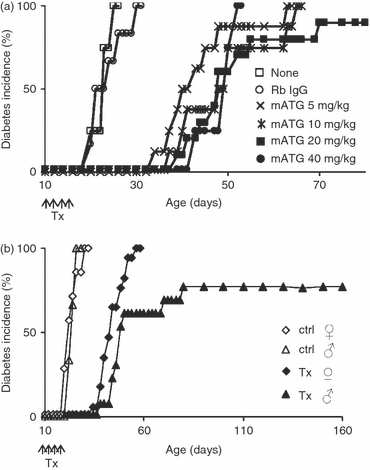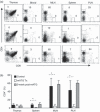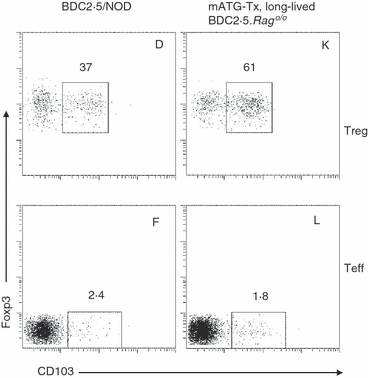Induction of self-antigen-specific Foxp3+ regulatory T cells in the periphery by lymphodepletion treatment with anti-mouse thymocyte globulin in mice
- PMID: 21711461
- PMCID: PMC3173694
- DOI: 10.1111/j.1365-2567.2011.03466.x
Induction of self-antigen-specific Foxp3+ regulatory T cells in the periphery by lymphodepletion treatment with anti-mouse thymocyte globulin in mice
Abstract
Lymphodepletion therapies are increasingly tested for controlling immune damage. One appealing premise for such a therapy is that it may 'reboot' the immune system and restore immune tolerance. However, the tolerogenic potential of lymphodepletion therapies remains controversial. The debate is exemplified by conflicting evidence from the studies of anti-thymocyte globulin (ATG), a prototype of immunodepleting drugs, in particular on whether it induces CD4(+) CD25(+) Foxp3(+) regulatory T (Treg) cells. To understand the impact of ATG on T cells at a clonal level in vivo, we studied the effect of anti-mouse thymocyte globulin (mATG) in a reductionist model in which the T-lymphocyte repertoire consists of a single clone of pathogenic T effector (Teff) cells specific to a physiological self-antigen. The mATG treatment led to peripheral induction of antigen-specific Treg cells from an otherwise monoclonal Teff repertoire, independent of thymic involvement. The de novo induction of Treg cells occurred consistently in local draining lymph nodes, and persistence of induced Treg cells in blood correlated with long-term protection from autoimmune destruction. This study provides in vivo evidence for clonal conversion from a pathogenic self-antigen-specific Teff cell to a Treg cell in the setting of immunodepletion therapies.
© 2011 The Authors. Immunology © 2011 Blackwell Publishing Ltd.
Figures






References
-
- Sakaguchi S, Yamaguchi T, Nomura T, Ono M. Regulatory T cells and immune tolerance. Cell. 2008;133:775–87. - PubMed
-
- Beiras-Fernandez A, Thein E, Hammer C. Induction of immunosuppression with polyclonal antithymocyte globulins: an overview. Exp Clin Transplant. 2003;1:79–84. - PubMed
-
- Mohty M, Gaugler B. Mechanisms of action of antithymocyte globulin: old dogs with new tricks! Leuk Lymphoma. 2008;49:1664–7. - PubMed
-
- Lopez M, Clarkson MR, Albin M, Sayegh MH, Najafian N. A novel mechanism of action for anti-thymocyte globulin: induction of CD4+ CD25+ Foxp3+ regulatory T cells. J Am Soc Nephrol. 2006;17:2844–53. - PubMed
Publication types
MeSH terms
Substances
Grants and funding
LinkOut - more resources
Full Text Sources
Other Literature Sources
Molecular Biology Databases
Research Materials

